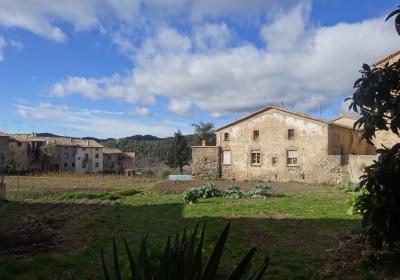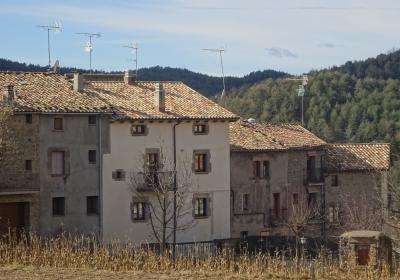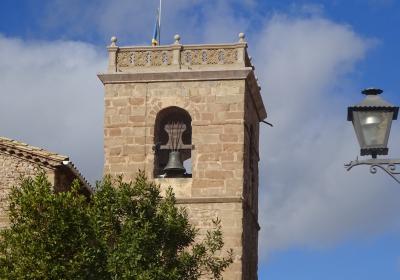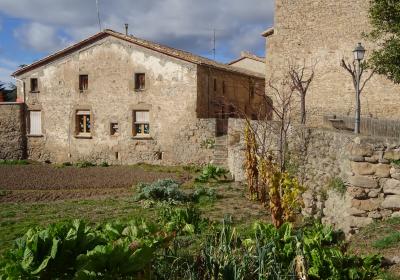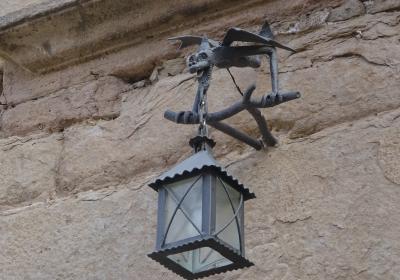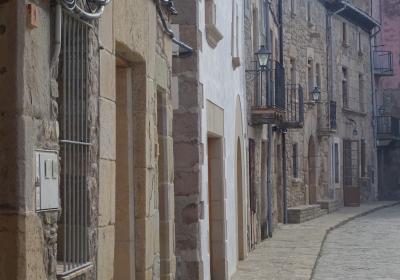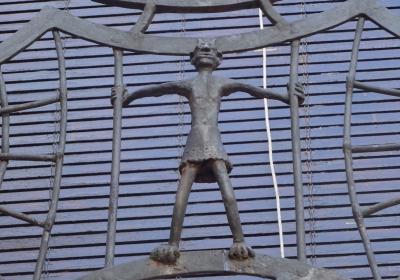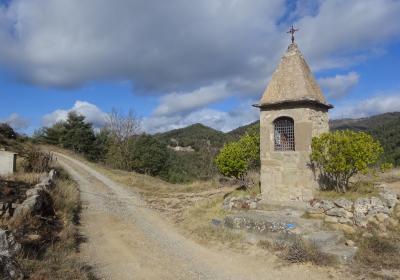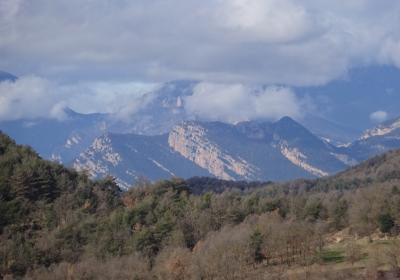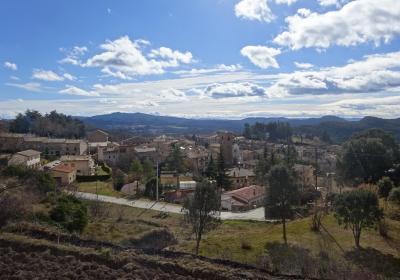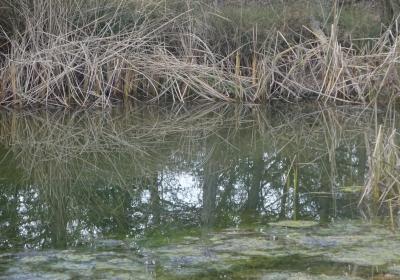The tenth stage of the GR 1 Transversal path begins in the pretty town of Alpens and runs entirely through Lluçanès, a plateau that is found between the region of Osona, Berguedà Bages. The first half of the stage goes along the old royal path which was used to join up Alpens with Santa Eulàlia de Puig-oriol. This first stretch gives you the chance to visit the church of Sant Cristòfol de Borrassers and walk alongside several historic country houses. From Santa Eulàlia you continue the route to Lluçà, passing the stream in Lluçanès, the hill of Cortius, and the castle of Lluçà.
Average. Due to the length and ascent to overcome.
No special equipment needed.
Lluçanès. 01:30.000. Editorial Alpina.
Topographic base of Catalonia 01:25,000 Geological and Cartographic Institute of Catalonia (ICGC).
The tenth stage of the GR 1 route begins in (1) Alpens (0:00h - 855m), in the plaza with the church. You walk along Calle Graell and Calle de Baix and leave the town from its most southwestern point. You walk past a track on your left and take a path (left) that goes between fields and takes you to the Gavaressa stream. Cross the stream and head up the other slope (W) of the ravine until you come onto a track. At this point, you tackle a stretch where there are constant detours and changes to the route. You should pay attention and follow the white and red GR signs at all times. You pass El Graell, the hermitage of Sant Joan, Mas Perotet and the Mas de les Collades.
On a hill you go past two tracks on either side of the path and continue straight on (SW) along the main path. The path gradually turns towards the left and heads south. After a good while walking along the convenient track, you will arrive at the detour for (2) Sant Cristòfol de Borrassers (1:30 - 825m). It is worth taking a brief diversion (0:05 round tour) to explore this beautiful church. Continue along the track southward. You will see that the road is ever closer (on the left) You pass the country house of Coma de Borrassers and go around the Serrat de Lurda. Finally, you will come out onto the (3) road BV-4341 (2:05 - 792m). Cross the road and take a path (S) that goes through Cal Coix and comes to the town of (4) Santa Eulàlia de Puig-oriol (2:15 - 755m).
You leave Santa Eulàlia via the road (W) and immediately head off along a path that emerges on the right. During the following stretch of the stage you head west along several paths and tracks that run a few metres above the road. After crossing a little crest, you begin to descend towards the (5) stream of Lluçanès (2:45 - 645m). You cross the stream over a bridge and turn left, passing a cave on your right. Immediately, before reaching Molí de Puig-oriol, you take a track that climbs directly up the Serrat del Melí. It leads out onto a path and you will not take long to reach the (6) hill of Cortius (2:50 - 720m).
At this point you change direction again: from hear and up until Lluçà, you will head south. The hill that the castle of Lluçà stands on will serve as a reference point during this last stretch of the stage. You change paths several times and finally arrive at a little hillock, you will find yourself on the hill (N) of the castle of Lluçà. On you left (E) a little path emerges that climbs up to the castle (0:15 round trip). It is really recommendable to climb up to the castle, as from up high you can enjoy very expansive views over the entire region. You return to the northern hill of the castle of Lluçà and travel a final few metres south towards the town of (7) Lluçà (3:40 - 750m) and the sensational monastery of Santa Maria de Lluçà. The town of Lluçà is very dispersed and is comprised of several houses and country houses scattered around the area surrounding the hill with the castle and the monastery of Santa Maria.
Discover Lluçanès, an area full of history as well as complex and diverse orography.
Take a detour off the GR 1 and visit the pretty church of Sant Cristòfol de Borrassers.
Visit the Romanesque monastery of Santa Maria de Lluçà and its beautiful cloister.
The name Lluçanès has its origins in the castle of Lluçà? In turn, the name "Lluçà" comes from the Latin name Lucius. The castle is mentioned in documentation from the year 905 as kastro Lucano, which means “the castle of Lluc”. The castle sits atop a hill, however, all that currently remains of it is a wall on the north side and two rooms on the south side. At the foot of the castle you will find the church of Sant Vicenç del Castell, with a totally circular and very well preserved floor.
Visiting the Romanesque church of Sant Cristòfol de Borrassers, it was restored some years ago and is located in a nice elevated spot, from where you can enjoy a pretty panoramic view over a large part of Lluçanès.




